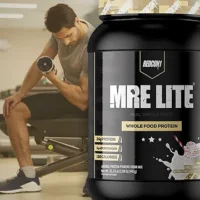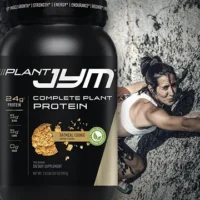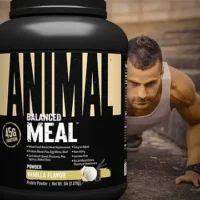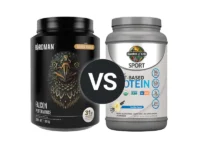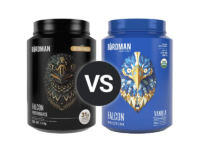Knowledge BaseYou're Questions Answered
What is pea protein powder?
Pea protein powder is a plant-based protein supplement derived from yellow split peas. It is a popular choice for individuals seeking a vegetarian or vegan protein source, as well as those with dietary restrictions or allergies to dairy, soy, or gluten. Pea protein powder is known for its high protein content, digestibility, and nutritional benefits. Below, we explore the characteristics, nutritional profile, benefits, and uses of pea protein powder.
Characteristics of Pea Protein Powder
1. Source and Production
Pea protein powder is made from yellow split peas, which are legumes rich in protein. The production process involves drying and grinding the peas into a fine flour, then separating the protein from the starch and fiber. The resulting protein isolate or concentrate is then processed into a powder form, retaining the essential amino acids and other nutrients1.
2. Nutritional Profile
Pea protein powder is a rich source of protein, typically containing around 80-85% protein by weight. It is an almost complete protein, meaning it contains all nine essential amino acids, though it is slightly lower in methionine. Pea protein also provides a good source of branched-chain amino acids (BCAAs), which are important for muscle protein synthesis and recovery2.
Benefits of Pea Protein Powder
1. Hypoallergenic
Pea protein powder is naturally free from common allergens such as dairy, soy, and gluten. This makes it an excellent option for individuals with allergies or sensitivities to these ingredients. It is also suitable for those following a vegan or vegetarian diet3.
2. High Digestibility
Pea protein is highly digestible, with a digestibility rating comparable to animal-based proteins like whey and casein. This means that the body can efficiently absorb and utilize the protein, making it an effective choice for supporting muscle growth and recovery4.
3. Supports Muscle Maintenance and Growth
The complete amino acid profile of pea protein, along with its high content of BCAAs, supports muscle maintenance and growth. It is particularly beneficial for individuals engaging in regular exercise or resistance training, as it helps repair and build muscle tissue5.
4. Environmentally Friendly
Pea protein is considered an environmentally friendly protein source. The cultivation of peas requires less water and fewer resources compared to animal-based protein sources. This makes pea protein a sustainable choice for those looking to reduce their environmental impact.
Uses of Pea Protein Powder
1. Protein Shakes and Smoothies
Pea protein powder can be easily mixed with water, plant-based milk, or juice to create protein shakes and smoothies. It blends well with various flavors and can be combined with fruits, vegetables, and other supplements for added nutrition.
2. Baking and Cooking
Pea protein powder can be used in baking recipes, such as protein bars, muffins, pancakes, and cookies, to increase the protein content. It can also be added to soups, sauces, and other savory dishes as a protein boost.
3. Meal Replacement
Due to its high protein content and hypoallergenic nature, pea protein powder can be used as a component in meal replacement shakes. It provides a balanced source of protein and can be combined with other nutrients for a complete meal.
- Gorissen, S. H., Crombag, J. J., Senden, J. M., Waterval, W. H., Bierau, J., Verdijk, L. B., & Van Loon, L. J. (2018). Protein content and amino acid composition of commercially available plant-based protein isolates. Amino Acids, 50(12), 1685-1695.
- Hoffman, J. R., & Falvo, M. J. (2004). Protein–which is best? Journal of Sports Science & Medicine, 3(3), 118-130.
- Messina, M., & Messina, V. (2010). The role of soy in vegetarian diets. Nutrients, 2(8), 855-888.
- Rutherfurd, S. M., Montoya, C. A., Zou, M. L., & Moughan, P. J. (2015). Digestible indispensable amino acid score (DIAAS) and digestible amino acids in animal and plant-based protein sources. Journal of Animal Science and Biotechnology, 6(1), 1-7.
- Moore, D. R., Robinson, M. J., Fry, J. L., Tang, J. E., Glover, E. I., Wilkinson, S. B., ... & Phillips, S. M. (2009). Ingested protein dose response of muscle and albumin protein synthesis after resistance exercise in young men. American Journal of Clinical Nutrition, 89(1), 161-168.
Related Questions
Related Reviews
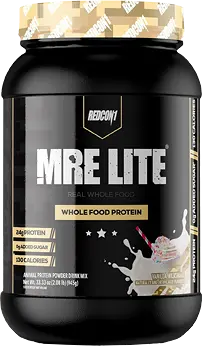
Your Answer
We are a participant in the Amazon Services LLC Associates Program, an affiliate advertising program designed to provide a means for us to earn fees by linking to Amazon.com and affiliated sites.

